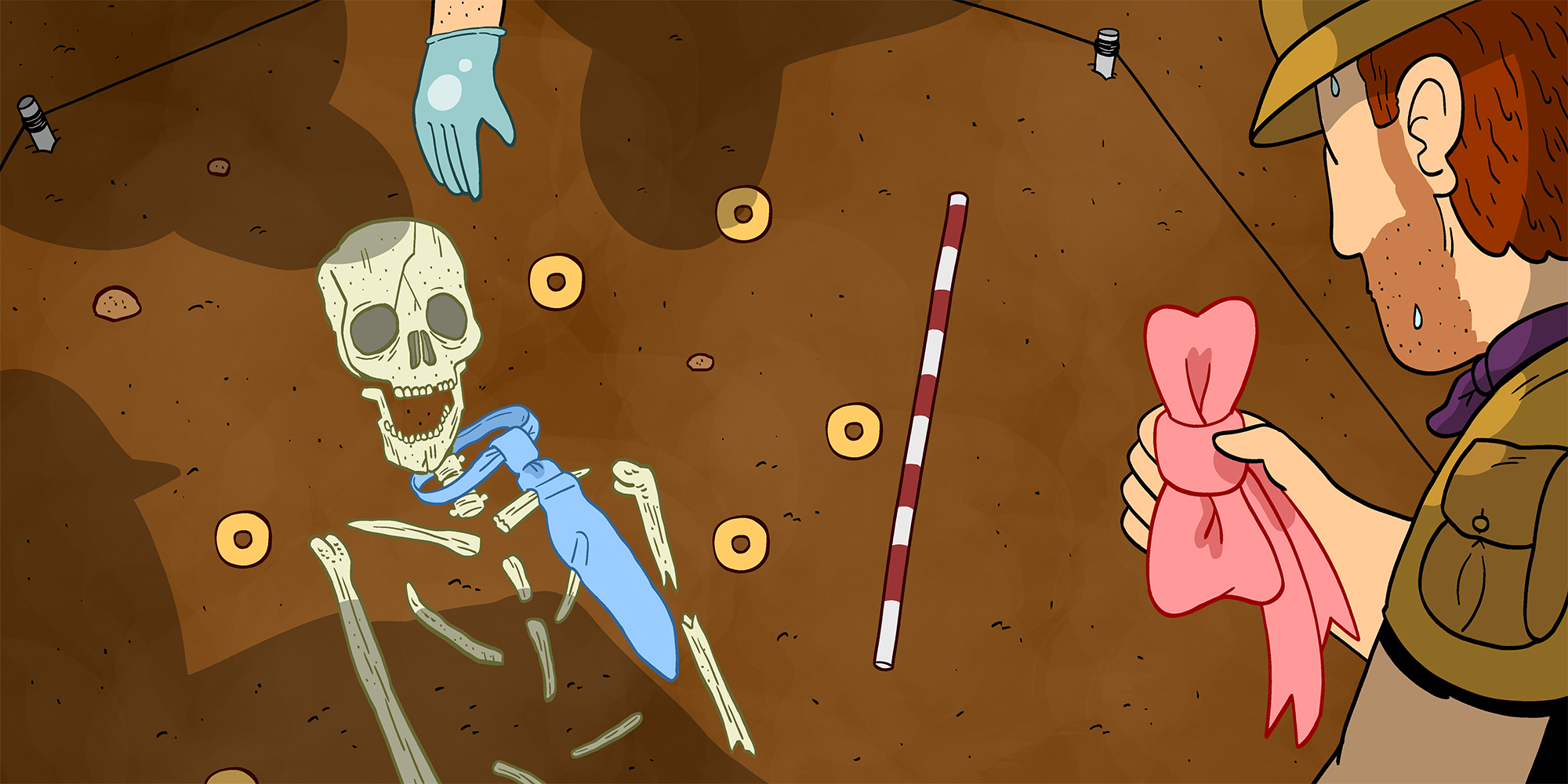In 1968, workers digging a trench for a water pipeline in southern Finland came across the knotted bronze hilt of an early medieval sword. When the archaeologist Oiva Keskitalo excavated the dark soil of what would become known as the Suontaka grave, he unearthed the remains of a single skeleton buried with a second sword, a sheathed knife, and jewelry, including two brooches still clinging to threads of wool. Traditionally, women of that culture were buried with brooches, and men were buried with swords; finding both in the same grave flummoxed Keskitalo. He combed the grave for evidence of another individual, or anything that might explain the discrepancy, but he found nothing. The grave, dug in the 11th or 12th century, was only ever big enough for one.
The Suontaka grave and its conflicting grave goods bewildered archaeologists decades after its discovery. Some suspected it belonged to a powerful woman, perhaps a leader or a warrior who garnered respect during a turbulent time in the region and was buried with her swords. Others argued the grave must have originally held two people, male and female. After all, Finland's acidic soil had dissolved almost all of the skeleton into a soft mass. The only two bones that could be lifted from the grave, two femur fragments, were not enough for scientists to estimate the skeleton's sex, leaving the question of who was laid to rest at Suontaka a thousand years ago an enigma.
In 2017, Ulla Moilanen, an archaeologist at the University of Turku in Finland, had begun reading hundreds of excavation reports from medieval Finnish graves for her doctoral dissertation. During this research, she spotted the Suontaka burial. "There had been so much speculation about the grave," Moilanen wrote in an email. She suspected Suontaka held a woman interred with a sword, similar to the famous Birka burial—a Viking grave holding a sword, ax, spear, and two shields that, in 2017, was revealed to hold a female skeleton. The researchers who first excavated the Suontaka grave in the 1960s could only examine the features of the bones to estimate the individual's sex. But recent advances in technology offered Moilanen a much more accurate and powerful tool at her disposal: the ability to sequence ancient DNA. As researchers extracted and processed the DNA from a femur fragment, Moilanen had already begun writing an article about the implications of a woman's sword grave in early medieval Finland. Then the DNA results arrived.
Sleuthing out sex from chromosomes is usually an easy task. But this individual's DNA did not align with an XX or XY binary. A mathematician came in to calculate the probability of three scenarios that would explain the quandary: the sample did in fact belong to an XX or XY individual, the sample was a product of contamination, or the sample belonged to an individual with XXY chromosomes, which is a condition called Klinefelter syndrome. The calculations overwhelmingly pointed to Klinefelter syndrome, "which is not that rare," Moilanen said. Indeed, Klinefelter syndrome is the most common chromosomal condition; researchers estimate that about one in 660 men have an extra X chromosome, and many men never learn of their condition. "What was rare, however, was that the discovery came from a grave that had been considered exceptional because of the grave goods," she said.
Moilanen scrapped her woman warrior paper and wrote a new one contextualizing the individual's seemingly conflicting grave goods with their DNA, which was published in the European Journal of Archaeology in 2021. "Past individuals did not know about genes or chromosomes," Moilanen said, adding that her team did not want to make any assumptions about the individual's identity from chromosomes alone. But genetic differences can influence how a person moves throughout the world, how they are seen by others, and how they see themselves. So Moilanen's paper acknowledged the complexity of sex and gender, opening up new possibilities of how this individual may have moved throughout their world outside a rigid gender binary. The paper enjoyed a media spotlight rarely cast upon Finnish Iron Age graves, with headlines heralding the find in uncannily modern terms—"1,000-Year-Old Remains May Be Of A Highly Respected Nonbinary Warrior, Study Finds," declared NPR—that unsurprisingly led to conservative backlash.
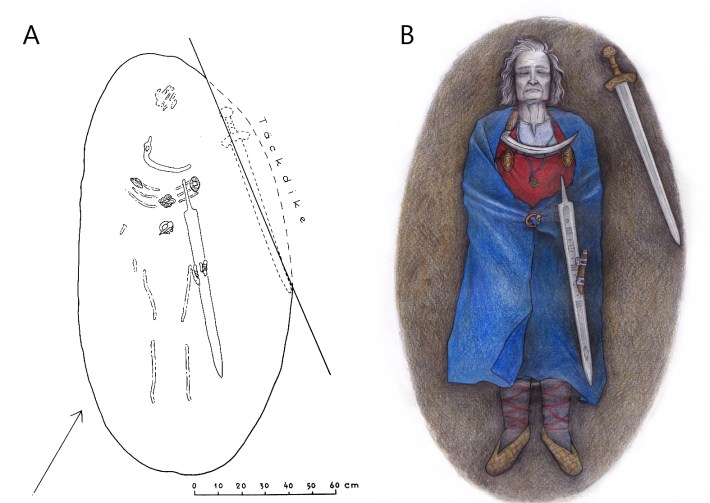
As ancient DNA technology ascertains individuals' sex and researchers re-evaluate old assumptions about burials, Suontaka has become one of many graves that suggest ancient and prehistoric people may have understood gender in more expansive ways than many people previously imagined. Traditionally, archaeologists dismissed ancient individuals buried with grave goods associated with the opposite sex as discrepancies, or even excluded them from data sets altogether. Now, some researchers are striving to bring these burials back into the fold of archaeology, elevating them from anomalies to a population in their own right. It is not a revelation that gender and sex diversity peeks out of human history across space and time. But this newfound recognition raises new questions about how much we can know about the lives of the long-dead, and who our speculation serves.
For centuries, osteology—the study of the size, shape, and characteristics of individuals' bones—was the only method of estimating a skeleton's biological sex. Osteologists look for visual differences in certain features, such as the smoothness of a brow or the prominence of a chin, to stamp a skeleton as male or female. One strong indicator is the pelvis, which has several general shape differences between biologically female and male individuals due to the requirements of childbirth. Of course, male, female, and intersex individuals might have pelvises and other bones whose shapes do not align with expected patterns or fall somewhere in the middle.
Ancient burials complicate these deductions even more. Skeletons are rarely perfectly preserved, meaning that bones most relevant to osteological sex might be fragmented or even missing. "Osteologists actually count up all the markers they can see and then they make a sum of it," said Eleonore Pape, a burial archaeologist at the Max Planck Institute for Evolutionary Anthropology. A high score for certain traits would label someone a "secure female." But a skeleton with a lower score, or even missing traits, might be labelled a more equivocal "rather female," and a skeleton with no markers or with bones that do not adhere to patterns would receive a score of zero—no known sex. "That's basically the spectrum of accuracy we can assume," Pape said. But when archaeologists did acknowledge osteology's penchant for error, it was often in service of their own expectations: If a skeleton's estimated sex did not match their accompanying grave goods, an archaeologist might conclude the osteological estimate was wrong rather than seek another explanation.
Now, ancient DNA sequencing technology has given researchers a more accurate tool for sleuthing out not just sex, but the whole spectrum of sex. The sampling process—in which scientists extract a sample of a bone or tooth, grind it into a powder, separate the DNA from the proteins with an enzyme, and sequence it—is laborious. "It can be extremely soul-crushing at times," said Kyriaki Anastasiadou, a PhD student in ancient genomics at the Francis Crick Institute in London. "You can get very fragmented data. You have a lot of missingness. You have a lot of contamination."
Anastasiadou has been working to sequence the genomes of people who lived in Britain in the past thousand years. Once she obtains an individual's DNA, one of the first steps is to identify their sex. Researchers have a few computational methods to do this. One method, developed by Anastasiadou's supervisor, the Swedish geneticist Pontus Skoglund, maps the sequencing reads to the X and Y chromosomes, only offering XX and XY as possible identifiers—a method with potential drawbacks. "If we only go out looking for these two categories, that's only what we're going to find," Anastasiadou said.
Sometimes this method would return unknown samples, which could potentially be explained by contamination or a lack of data. But Anastasiadou wondered if there was something else in play. She and colleagues tweaked the computation to measure just how many sequences aligned to any chromosome. When they plotted those results, they had a much more detailed view of each individual's sex. "We had samples that were previously sometimes assigned to one of those two categories, and we were now seeing that something else was going on," she said, adding that three people previously categorized as XY males actually had Klinefelter syndrome. These XXY individuals lived across thousands of years, between the Iron Age and the 19th century. They also uncovered an individual with a single X chromosome, or Turner syndrome, who lived 2,500 years ago, as well as individuals who had an extra copy of chromosome 21, or Down syndrome.
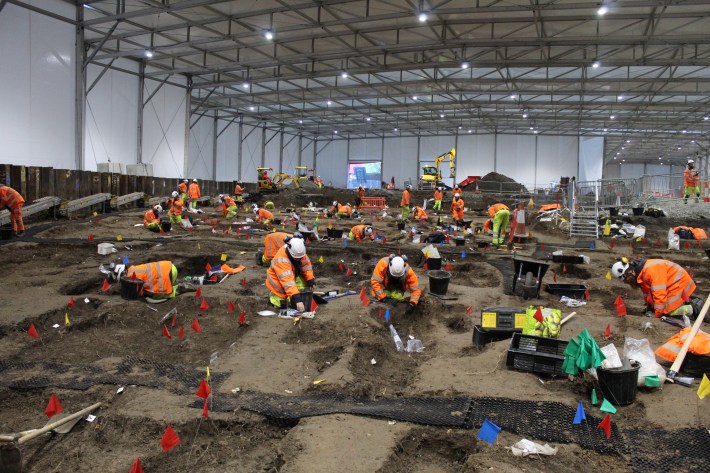
The sex of these particular individuals was not central to the researchers' larger project investigating the health and possible evolution of Britons over time. But they wanted to study these people in their own right. "We wanted to try to make a small portrait of each one of those six individuals" to compare these genetic results with the sociological and archaeological contexts of their graves, Anastasiadou said.
Today, people born with extra or missing chromosomes might or might not identify as intersex. Some might not be aware of their condition. Others might experience physical effects that influence how people perceive them and their sex or gender; for example, Klinefelter syndrome can cause enlarged breast tissue, reduced muscle mass, and infertility. It is impossible to know how an ancient person would have conceived of their own, potentially transgressive gender from a skeleton alone. And unlike the individual at Suontaka, none of the people Anastasiadou studied with Klinefelter syndrome were buried with grave goods, which might have offered clues into how they were understood by their culture. But they were all buried like their peers, suggesting, at least, they were not ostracized or treated differently. Anastasiadou finds comfort in this growing record of people with chromosomal differences. "It kind of gives you a sense of our shared humanity," she said. "It makes the past even more relatable in a way, at least to me."
Because ancient DNA sequencing is an expensive and arduous process, the vast majority of ancient individuals have not been sequenced. But many potentially gender-variant graves that were excavated decades ago were excluded from proper study because of their conflicting archaeological evidence. So some researchers are returning to the archives to reconsider the excavation reports of these outlier graves and elevate them from the margins of history.
When James Davison, a PhD student in medieval history at the University of Liverpool, read through books recording Anglo-Saxon graves, he occasionally noticed examples of these contradictory graves. But they were often relegated to a brief paragraph that dismissed them as errors of preservation or interpretation—"'something wrong' is the explanation for it," Davison said. As a result, the graves with matching sex and gender that were discussed offer an overwhelmingly binary, normative picture of gender in Anglo-Saxon society. These researchers were "not necessarily consciously doing that, but that's just what you're taught good practice is," Davison added.
By reexamining these problematic graves, archaeologists have uncovered evidence of these individuals' expansive genders or ways of life. In Sweden, the lavish Birka burial—outfitted with a sword, an axe, a spear, a battle knife, arrows, two shields, a mare and stallion, and also a set of military gaming pieces—was revealed to belong to a high-ranking female Viking warrior, according to a recent osteological analysis and DNA study. In Peru, archaeologists excavating a 9,000-year-old burial in Peru that contained a trove of stone tools and projectile points assumed such goods belonged to a man who was a great hunter or chief. But tests of the skeleton's dental enamel revealed the buried individual was a female around 17 to 19 years old, and likely a big game hunter in her own right.
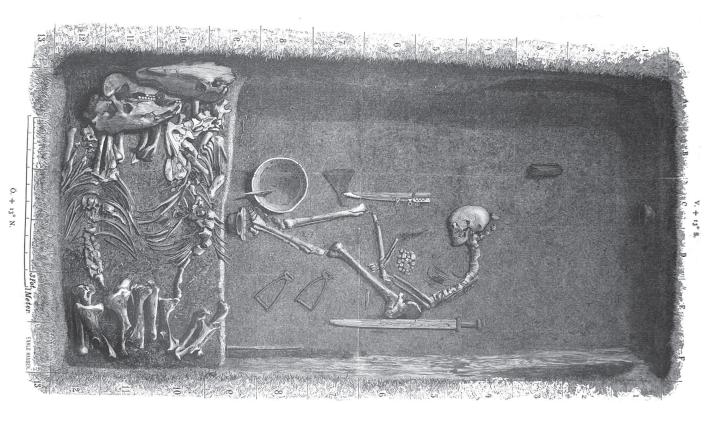
When Pape heard about these graves, which had reignited gender debates in the field that have been ongoing since the '80s, she started thinking. As a burial archaeologist, she often encountered sites with a handful of graves that did not fit sex and gender expectations. She knew that archaeologists generally do not focus on single individuals but populations as a more robust way to draw conclusions about past societies. But as more of these burials surfaced, it seemed to her unscientific to dismiss them all as statistical exceptions without actually checking if they actually were, as many archaeologists had done in the past.
Some even proffered more creative explanations—for example, suggesting all of these individuals were religious leaders called shamans, who in certain societies were associated with gender-bending rituals. But this theory is often applied as a catch-all for any "deviant" grave regardless of whether its archaeology shows specific evidence of shamanism, as the ethno-archaeologist Andy Reymann has written. Pape's irritation with these explanations "is that they tend to be the first go-to-answers, before considering even simpler interpretations," she said.
"What do they do with those five individuals that just don't fit?" Pape asked. "They try to find some crazy theories of how to frame them." She wondered: Just how many of these contradictory graves were out there? And what would it mean for an archaeologist to treat these burials not as outliers, but as a minority group in their own right, persisting across time and space?
Last spring, Pape and Nicola Ialongo, a prehistoric archaeologist at the Georg-August-Universität Göttingen, Germany, put this question to the test in a paper in the Cambridge Archaeological Journal that analyzed 1,252 burials in Central Europe that did not align with a gender binary, from the early Neolithic to the Late Bronze Age, 5500 BCE to 1200 BCE. The researchers recorded each individual's osteological sex and archaeological gender. They also collected contextual data for each site, to better understand when these excavations happened and to clarify who collected the data and how. For a long time in Central Europe, archaeologists would hire osteologists to determine the sex of entire populations. "It was considered not to be questioned, right? It's scientific data that we don't really understand how it's been made," Pape said. So many records simply listed the determinations—secure male, rather female, indeterminate, etc.—with no information on what evidence they used to make individual estimates.
The researchers found that the sex of skeletons overwhelmingly and unsurprisingly matched their archaeological gender suggested by their grave goods. But they also found about 10 percent of the graves had opposite sex and gender determinations—comprising a not-insignificant minority. Although Ialongo was surprised by this number, Pape was not. "We see that every site has individuals with which the archaeologists struggle, and those are the 10 percent," she said. "I was maybe surprised to see that it's recurrent through time," Pape added.
Indeed, the authors found examples of burials with opposite sex and gender determinations across their entire data set, which spanned nearly 4,000 years. Burial 159, a grave in Bavaria Germany dated to 5500–4900 BCE, contained an elderly female individual who was buried with an ax-like tool called an adze and five arrowheads, both traditionally considered masculine grave goods. And a burial site at Olmo di Nogara, dating back to 1800–1700 BCE and located in what is now the province of Verona in Italy, contained 14 male skeletons buried with feminine accessories such as pins and amber beads.
Pape also uncovered evidence of confirmation bias in past osteological estimates. The analysis revealed that individuals buried with grave goods were 30 percent more likely to receive an osteological sex estimate than individuals buried with nothing—suggesting that the number of mismatched graves might be even higher. One of the graves at Olmo di Nogara, Burial 411, contained the skeleton of an elderly male individual buried with a ceramic vessel, bronze hair spirals, pins, amber beads, a needle, a bone comb, and a dagger. The site's archaeologist originally struggled to interpret this person—either the osteology was wrong, or a male person with a masculine dagger was buried while adorned in feminine jewelry. The archaeologist eventually opted for the first explanation, as well as reclassifying the dagger as a "feminine" knife, Pape said.
While most people in prehistoric Europe understood themselves either to be men or women, the persistence of these individuals across time and space opens up the possibility these Neolithic societies had room for a more expansive understanding of gender. "This is only one possible explanation among many others," Pape said, adding that women may have gone to war but still perceived themselves as women. "Unfortunately, this we will never know." But if the mismatch between these skeletons' sex and archaeological gender is proven true in molecular testing, Pape and Ialongo argue that these burials are statistically significant enough to be considered a minority population. "While an exception would be limited to a single person that is different from others—someone that is not included, and in a way unpredictable—a minority can be formally acknowledged, protected, and even revered," the authors write.
Acknowledging that ancient graves hold the remains of people who may have lived and died outside a gender binary seems simple enough. But how much can we really infer about a dead person, especially someone who left behind no written history, from their grave goods? Archaeologists trust grave goods as signals of someone's gender because they do reliably predict a skeleton's biological sex. "When there is certifiable molecular testing of the skeleton, very often when the bones and the goods match up, they really do match up," said Davison, whose PhD research looks at mismatched burials through the lens of trans theory. But rather than undermining his research, Davison believes this overwhelming adherence to a norm proves that grave goods remain a strong indicator of a person's gender, regardless of biological sex. "We can kind of trust the signals of masculinity and trust that we do understand at least what those signals are trying to tell us," he said.
Davison's dissertation examines Anglo-Saxon burials with mismatched biological sex and archaeological gender across England. While examining burial records of the Norton-on-Tees Cemetery, which dates from the 6th and 7th centuries, Davison found 11 graves where osteological male skeletons—three "tentative" males and eight "sure" males—had been buried with feminine grave goods. One burial of a tentative male who died between the ages of 21 and 25 was buried with items including 62 beads from a necklace or garland, two copper pins, a pair of clasps used to fasten women's clothing, and a round brooch. All of the 11 mismatched graves had expensive grave goods, suggesting they were high-status, and were buried inside the cemetery alongside all the other graves. "They've not been treated badly. They're not cramped," he said. Davison often spotlights these gaudy graves in his research, partly because he believes they reveal their presentation or understanding of their gender did not inhibit their social standing. "It didn't make you special, but it didn't make you an outcast," he said.
In Davison's research, the gilded graves of males buried with feminine grave goods occur far more frequently than females buried with masculine grave goods. One possible explanation may be that "you need to be really quite high up on the social ladder for there to be symbols of masculinity that last," such as weaponry and riding gear, Davison said. After all, the metal and stones of jewelry withstand the test of time far better than styles of clothes. But Davison recently found one such grave recorded in the cemetery discovered beneath the rose garden at Tranmer House, near the extraordinary Sutton Hoo ship burial in Suffolk. The burial contained an osteological female who died between the ages of 20 and 30 and was buried with a shield, a spear, a knife, and an iron buckle.

Davison suggests the Tranmer House burial can be explained as the grave of a transmasculine individual, just as he suggests the 11 graves at Norton-on-Tees belonged to transfeminine people. He presents this not as fact, but as a theory as evidence-based as any other. "There will never be a single correct explanation for these graves," Davison said, adding that one of the biggest questions in burial archaeology is whether the objects buried with a person are, in fact, reflective of the items they owned, used, and wore in life. These items might also represent heirlooms from a person's family, or something else entirely. For example, some warrior burials contain skeletons either too young, too old, too undamaged to have ever used those weapons, Davison said, adding that "the wear and tear of using swords and spears is quite particular to that task." He acknowledges that a grave he interprets as transmasculine may actually belong to a woman who fought in battle and understood herself as a woman. "I'm saying that is one explanation for such a grave," he said. "Here's another one. And they're equally accurate and inaccurate, because we don't know."
In 2011 in what is now Prague, archaeologists unearthed a 5,000-year-old biologically male skeleton buried as if they were female, according to the burial rituals of the time. At a press conference on the discovery, the lead researcher Kamila Remisová Vesínov declared the skeleton could have been a "homosexual," "transgender," or "transsexual," as the scholar Avery Everhart wrote in a paper in the journal Hypatia. The subsequently absurd news cycle, with headlines identifying the remains as a "gay caveman" and "transgender skeleton," was propelled in part by a sincere desire to locate trans people in history to prove their legitimacy. Of course, the idea that people of any age should have agency over their identities and bodies should not require some prehistoric parallel of gender transgression as a requisite for respect. But, as Everhart points out, while a person can certainly be transgender, it is less clear if a skeleton can be.
The essential quagmire of any research that seeks to identify trans people in history is anachronism—articulating people, objects, or ideas outside of their time and place. We should not expect to find trans people across time and space as they exist today, and so using the concept of and language around "transgender" that first emerged in the 20th century to describe people who lived a thousand years ago might seem anachronistic, Davison said. "You've either got the choice of using such nebulous language to try and avoid saying trans, but it doesn't mean anything to anyone," he said. "Or I can say this is the closest to the meaning of these burials, in this reading, that we have in modern English."
The field of Anglo-Saxon archaeology is conservative, Davison said, and at one history conference he heard a researcher say offhandedly that the Anglo-Saxons knew as much about trans people as they knew about antibiotics. Davison found the comment extremely funny, because "there's a 10th-century eye salve that was proven in the past couple of years to be an effective antibiotic," he said, referring to Bald's eyesalve, a remedy of garlic, onion, English wine, and cow's bile that proved effective in combating antibiotic-resistant bacteria. It's true that the word "antibiotic" would mean as little to an Anglo-Saxon as the word "transgender." But Davison believes the ideas behind these words—a medicinal substance that heals wounds, or a person that identifies beyond their biological sex—would have been understood perfectly.
Moilanen and Pape chose to use the word "non-binary" (separate from the modern gender identity "nonbinary") to refer to ancient individuals buried in contradictory graves because they do not fit the archaeological two-option norm. But this language, as well as the thrust of their research, rankled some members of the scientific community and the general public. "There were some nasty personal attacks towards us online and by email," Moilanen said. "Some accused us of politicizing history and imposing modern beliefs on past societies." Pape's paper received some spirited feedback from members of the general public, one of whom accused them of inventing a "woke" angle to receive funding.
The goal of this research, of course, is not to politicize history, impose modern beliefs, or invent "woke" angles. The goal is to improve science: to make space for evidence-based explanations that reflect the many facets of societies long swallowed by time and the people who lived, and likely were loved, thousands of years ago. In the case of the Suontaka grave, the researchers' initial assumptions—that the grave would belong to a woman—were overturned by the DNA results. The revelation was exciting to Moilanen. "I got to reevaluate the grave in new ways that even I had not thought about before," she said. And for archaeologists like Pape who study prehistoric societies, the goal should be best-supported evaluations, not absolute truths. "It is impossible for archaeologists working on preliterate societies to make clear how people saw and understood themselves, as we cannot ask them," Pape said.
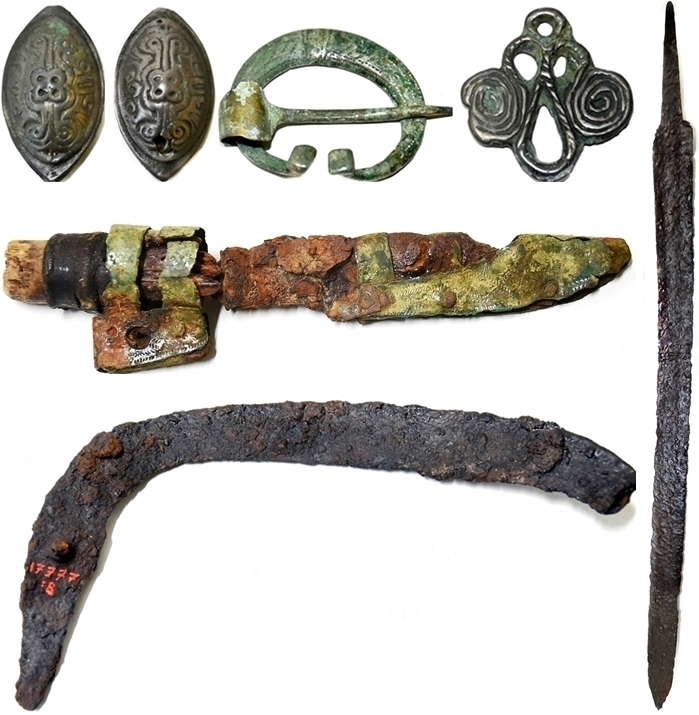
But it's clear that these people's lives are just as important and carry just as much insight into ancient societies as do those of traditionally masculine Viking warrior men and feminine maidens. These people, whoever they were and however they lived, deserve to be a part of history, not discarded by it. "There's been so much work done to erase transness in history that I do want to undo some of that," Davison said. As a trans person doing this research in England, where waves of recent legislation seek to limit gender-affirming care for adolescents, Davison said he feels a desire "to recognize and acknowledge something that resonates with transness in the past." When he started his research, the process was very emotional for him. He found himself wondering how similar his own experience of life is to his Anglo-Saxon subjects—and how different. "There just doesn't appear to have been the taboos and risks associated with that, and the impression of, you know, 'being trans is one of the worst things you can be' and you want to avoid—your kid comes out and you talk about grieving them," he said, pausing. "And I can't quite imagine what it feels like living in a world like that."
Whatever signs they may leave about gender, grave goods also leave behind evidence of care and relationships between people, living and dead. In some rare Scandinavian graves, biological males were buried in feminine clothes and jewelry, which archaeologists have suggested might have been a rite of humiliation for strangers, newcomers, and trespassers. But the person at Suontaka, who wore a brooch typical of their area, appeared to have been buried in their own community. "We can clearly see that the Suontaka individual was valued and cared for," Moilanen said. Someone—another member of a medieval Finnish society that was famously masculine and warlike—dressed them in warm, woolen clothes and furs, likely from a fox and a rabbit or hare. Someone adorned them with jewelry and placed their sickle directly on their chest. Someone laid their body on feathered bedding, a comfort they would no longer have been able to feel. And then someone covered this person, their silver and their furs and their pillows, in heaps of dirt, and grieved for them.
